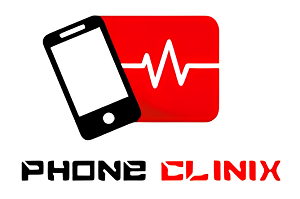In an age where smartphones are integral to everyday life, app installation issues can be incredibly frustrating. Whether you’re trying to install a banking app, social media platform, or a productivity tool, failed downloads or installations can hinder your workflow and disrupt daily tasks. Fortunately, phone diagnostic software is becoming a go-to solution for users experiencing these issues. This article explores how phone diagnostic software helps in diagnosing download and install problems, common causes of these issues, and steps users can take to fix them effectively.
What is Phone Diagnostic Software?
Phone diagnostic software is a tool designed to identify, analyze, and resolve issues related to smartphone performance. These tools examine everything from battery health and hardware malfunctions to software inconsistencies. Importantly, they are now increasingly used to pinpoint problems related to app installation.
These software solutions can scan your phone for hidden errors, check storage usage, identify compatibility issues, and even monitor the health of your operating system. Whether you’re using Android or iOS, diagnostic tools are available as both standalone applications and features built into the device’s settings or third-party apps.
Common App Installation Issues
Before jumping into solutions, it’s helpful to understand the typical problems users face when installing apps:
- Insufficient Storage Space
One of the most common barriers to app installation is a lack of available storage. Many users underestimate how much space is required for apps, especially when apps come with large amounts of cached data. - Corrupt Cache or Temporary Files
Temporary files and cache can become corrupted over time, interfering with the proper installation of new apps. - Outdated Operating System
Apps are often updated to work with the latest versions of operating systems. If your OS is outdated, you may not be able to download or install new apps. - Incompatible Devices
Some apps are only compatible with specific devices or versions of Android/iOS. Attempting to install an incompatible app will result in failure. - Poor Internet Connection
A weak or unstable connection can interrupt the downloading process, causing errors or incomplete downloads. - Security Restrictions or Permissions
Your phone’s security settings or installed antivirus software may block the installation of apps, especially if they’re downloaded from outside official app stores. - Google Play Store or App Store Errors
The app marketplaces themselves can sometimes experience issues, including bugs that prevent app downloads.
How Phone Diagnostic Software Helps
Now that we’ve explored the common issues, let’s look at how phone diagnostic software can help in diagnosing download and install problems.
1. Storage Analysis
Most diagnostic tools provide a clear breakdown of your phone’s storage usage. They can identify apps or files consuming large amounts of space and offer recommendations for freeing up memory. Some tools also automatically clean junk files and cache that may hinder installations.
2. Operating System Check
These tools can verify whether your OS is up to date and identify any pending updates that may be critical for app compatibility. They can also highlight OS corruption or bugs that may affect installations.
3. Connectivity Testing
Diagnostic apps often include tools for checking your Wi-Fi and mobile data strength. Some even test download speeds and suggest improvements to optimize app downloads.
4. Permission Management
By scanning your device’s security settings, diagnostic software can determine if certain permissions are blocking app installations. It may also suggest temporary adjustments or notify you about third-party apps (like antivirus programs) that are interfering with the process.
5. Error Code Interpretation
When app installations fail, they often generate error codes. Most users don’t know what these codes mean. Phone diagnostic tools can interpret these codes and provide tailored troubleshooting steps.
6. App Store Troubleshooting
Advanced diagnostic tools can test the health and functionality of the Google Play Store or Apple App Store. If these services are misconfigured or facing connectivity issues, the software can help reset them.
7. Background Process Management
Some installations fail due to other apps running in the background that conflict with the process. Diagnostic tools can analyze background activity and recommend what to shut down temporarily.
Diagnosing Download and Install Problems: Step-by-Step Using Diagnostic Tools
If you’re experiencing app installation issues, here’s a step-by-step approach using phone diagnostic software to solve the problem:
Step 1: Install a Trusted Diagnostic Tool
Choose a reputable phone diagnostic software from the Play Store or App Store. Apps like Phone Doctor Plus, TestM, or Device Info HW offer good features. Make sure to read reviews and check for recent updates.
Step 2: Run a Full Device Scan
Use the software to scan your phone. Pay attention to warnings related to storage, OS updates, network connectivity, and security settings.
Step 3: Check Storage and Clean Cache
If storage space is an issue, delete unnecessary files, apps, or media. Use the diagnostic software’s cache cleaner if available to remove corrupt temporary files.
Step 4: Update Your OS
Navigate to your phone’s system settings and check for software updates. Install them if available.
Step 5: Review Permissions and Antivirus Settings
Temporarily disable any antivirus apps and review permission settings. Ensure that app installations from verified sources are allowed.
Step 6: Test Internet Speed
Use the diagnostic tool to test your internet speed. If the connection is weak, switch to a stronger Wi-Fi or move to an area with better signal.
Step 7: Reattempt App Installation
Try installing the app again. If the problem persists, the diagnostic app may offer specific suggestions or generate a detailed report to help you or a technician solve it.
Tips to Avoid App Installation Problems in the Future
- Regularly clear your device’s cache and unnecessary files.
- Keep your OS and apps updated.
- Download apps only from trusted sources like the Google Play Store or Apple App Store.
- Monitor storage and maintain at least 20% of free space.
- Run phone diagnostics monthly to preemptively catch issues.
Final Thoughts
App installation issues can stem from a variety of causes, but with the right tools, diagnosing and fixing them becomes a manageable task. Phone diagnostic software is an invaluable asset when dealing with app installation issues, especially for diagnosing download and install problems. These tools provide a detailed look into your phone’s inner workings, allowing you to take informed steps to resolve issues and prevent them from recurring.
Whether you’re a tech-savvy user or someone who just wants their phone to work smoothly, incorporating a diagnostic tool into your routine can save time, reduce stress, and keep your device running efficiently. Don’t wait until a problem arises—be proactive with diagnostics and enjoy a seamless mobile experience.



